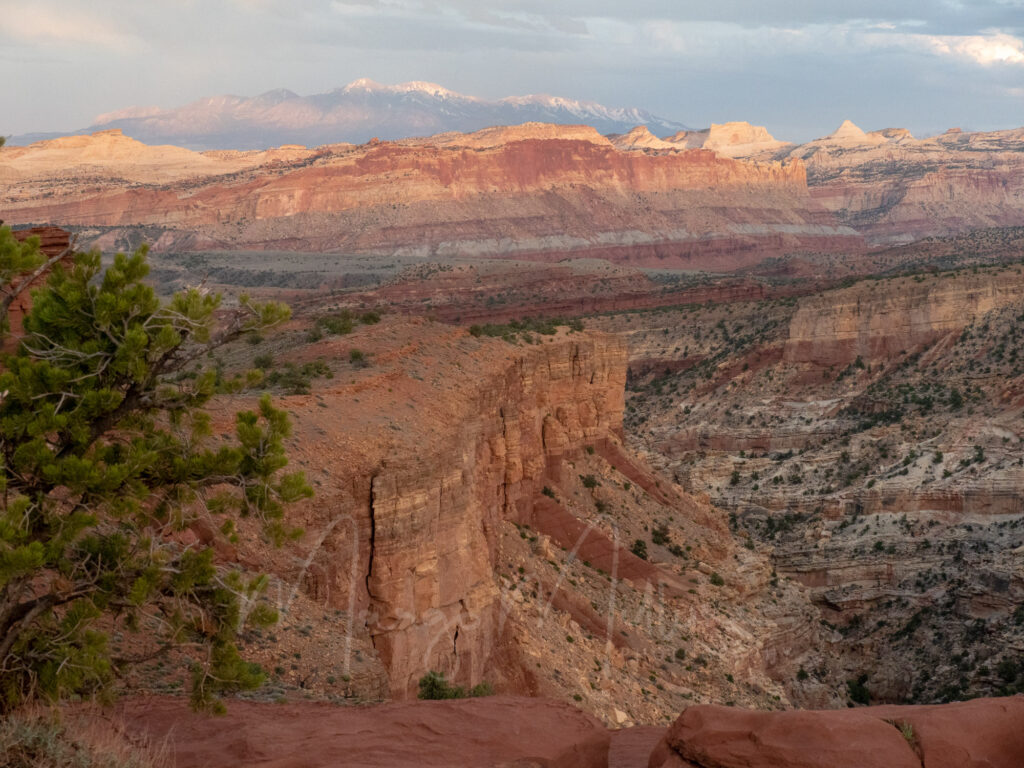 Capitol Reef National Park near Torrey, Utah, was our first stop on our visit to all five of Utah’s National Parks. The park occupies 378 square miles and is located along 70 miles of the 100 mile long geologic monocline (wrinkle in the earth) known as the Waterpocket Fold. The park had my attention the moment we spotted the park’s monolithic sandstone formations in the far distance from the vantage point of our rented Toyota Four Runner.
Capitol Reef National Park near Torrey, Utah, was our first stop on our visit to all five of Utah’s National Parks. The park occupies 378 square miles and is located along 70 miles of the 100 mile long geologic monocline (wrinkle in the earth) known as the Waterpocket Fold. The park had my attention the moment we spotted the park’s monolithic sandstone formations in the far distance from the vantage point of our rented Toyota Four Runner.
A word about renting a high clearance SUV
It’s unlikely I would ever own a Toyota Four Runner at home. Here I most definitely would. We went with our instinct to grab the last minute upgrade and knew we’d made the right decision immediately. Besides the fact that more things suddenly become possible with the higher profile, it simply feels better able to meet the boldness of the landscape. From a photography standpoint, even being able to stand on the running board to get a shot, was a huge advantage.
Lodging: No whiff of luxury here
For this first stop, we stayed at Broken Spur. The longstanding motor inn is a dying breed of lodging, unabashedly leaning into its camp and nostalgic appeal. But that was fine with us.
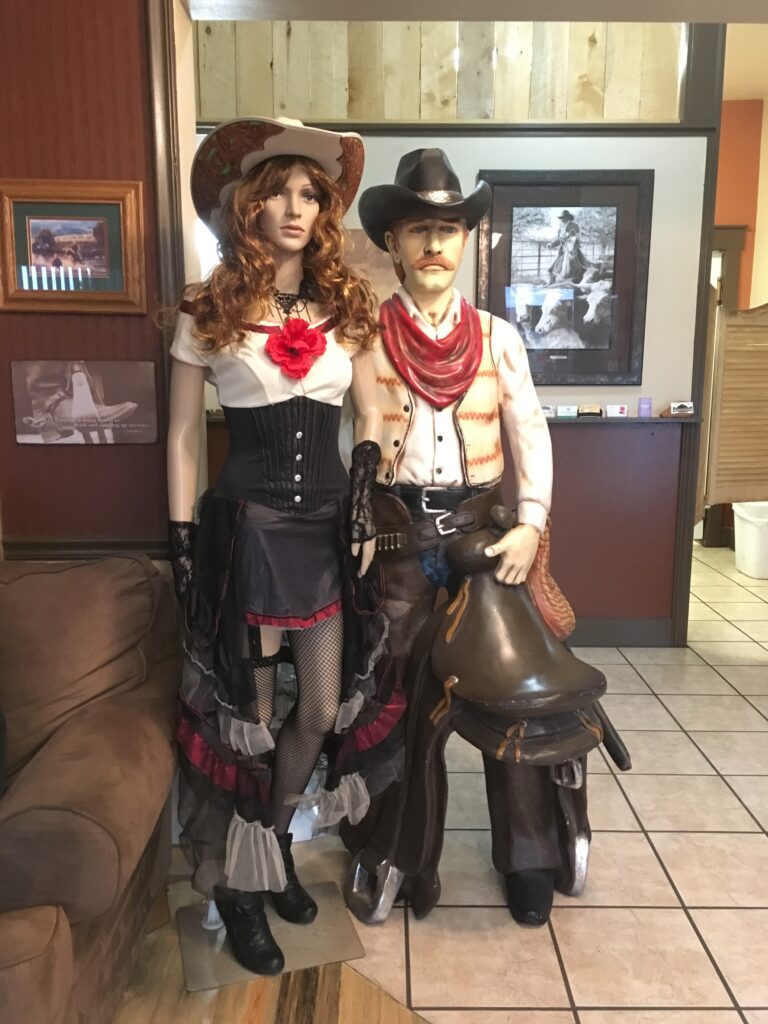
Young children would no doubt beg their parents to stay in one of Broken Spur’s free-standing, “well-appointed” covered Conestoga wagons that are available as an alternative to a traditional motel room. (This was a hard pass to both me and my adult daughter.) Located only five miles from Capitol Reef’s entrance, the place is clean, has a popular steakhouse, and includes a hot breakfast.
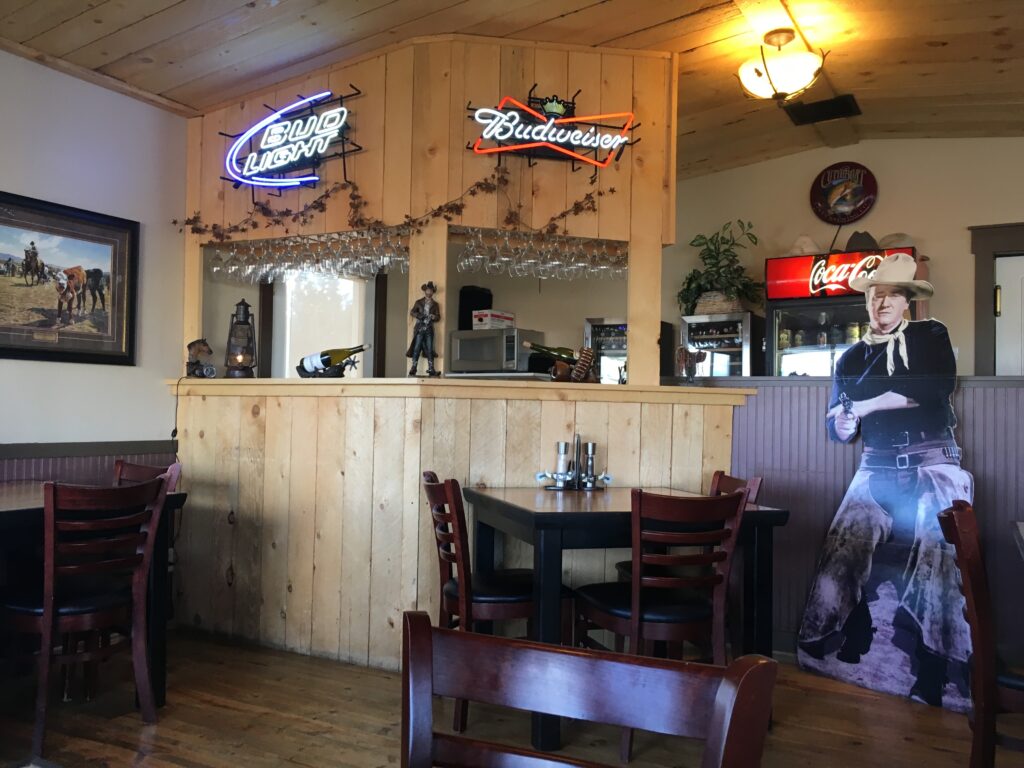
First stop at Capitol Reef: Fruita
We checked in and made the short drive to the visitor’s center and through Fruita, the heart of Capitol Reef National Park. In this part of the the United States, red-rocked canyon-lands generally stand in direct contrast to the gentle green landscapes of the east coast. This all makes the verdant valley of Fruita, the heart of Capitol Reef National Park, all the more surprising.
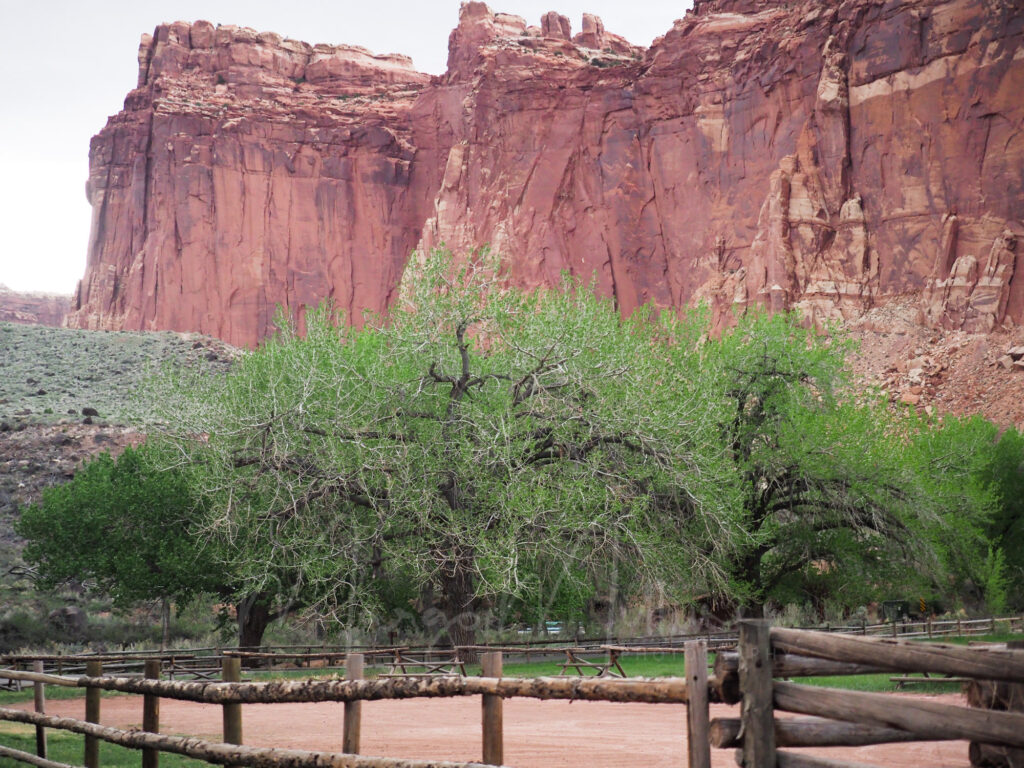
Fruita was founded as a pioneer community around 1880. The Fruita pioneers established orchards producing apples, apricots, cherries, peaches, pears, and plums. The orchards are still active today and operated by the National Park Service. The Gifford Homestead is an historical farmhouse where you can learn more about the pioneers and also buy some fresh baked pie.
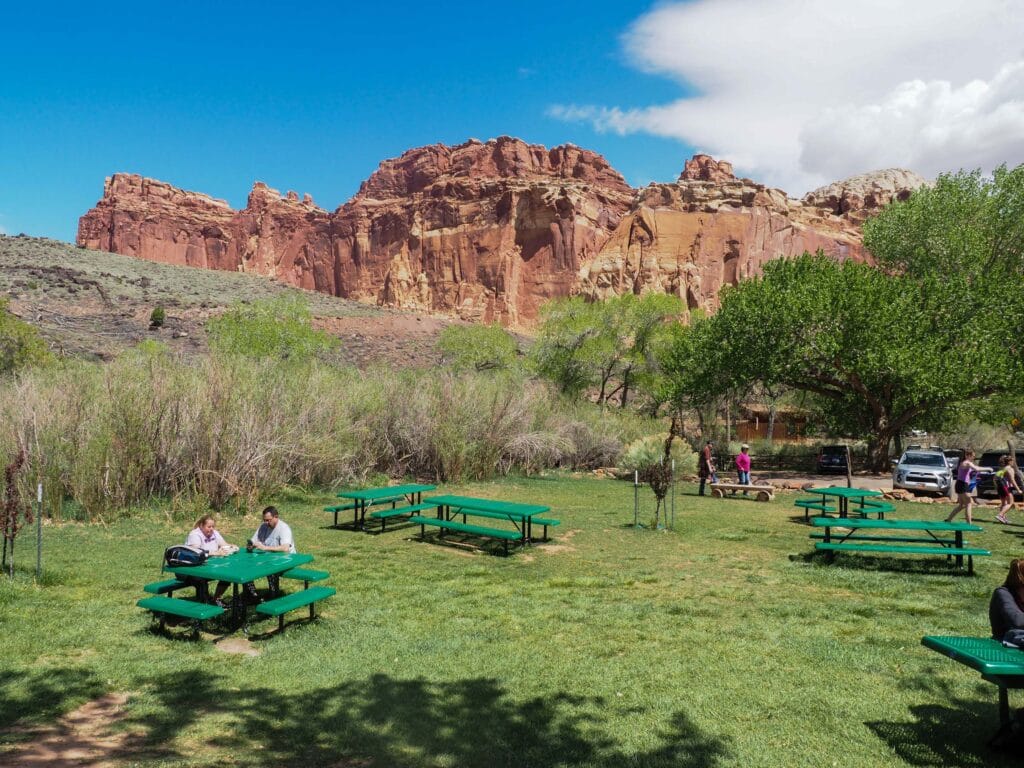
Four Hikes/Walks around Fruita : Sunset Point and Goosenecks, Capitol Gorge, Grand Wash and Hickman Bridge Trails
Compared to its more well-known counterparts, such as Zion and Arches, Capitol Reef only seems compact. Given the huge number of hikes for all levels available, taking the time to chat with a ranger at the visitor center to map out a plan is highly recommended. Just in time for sunset, we headed on our first stop, the short and easy hike to Sunset Point and Goosenecks.
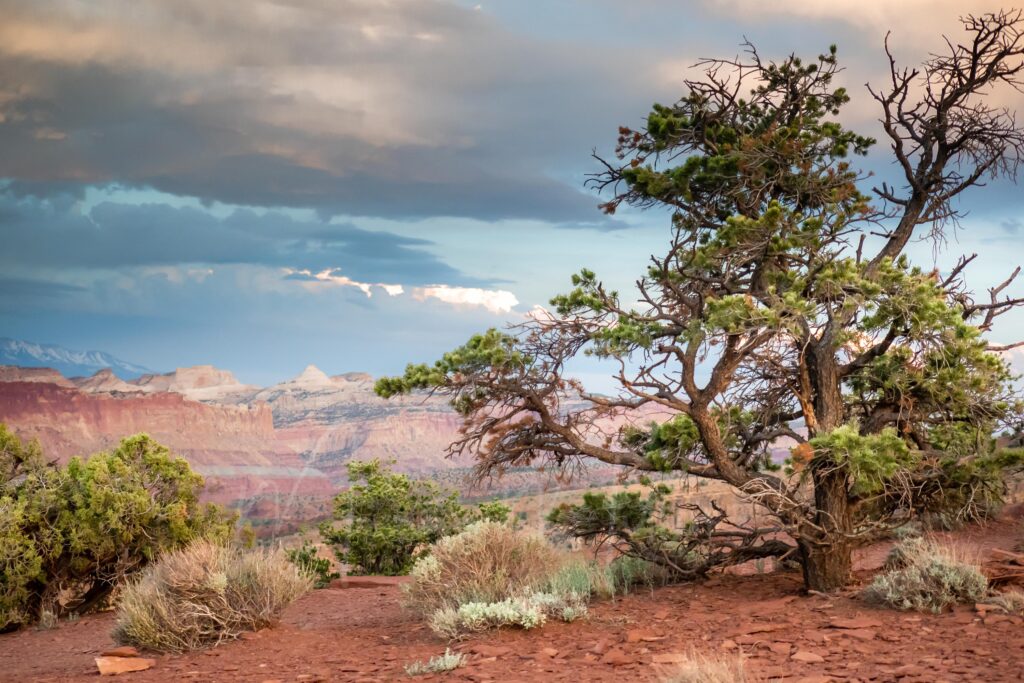
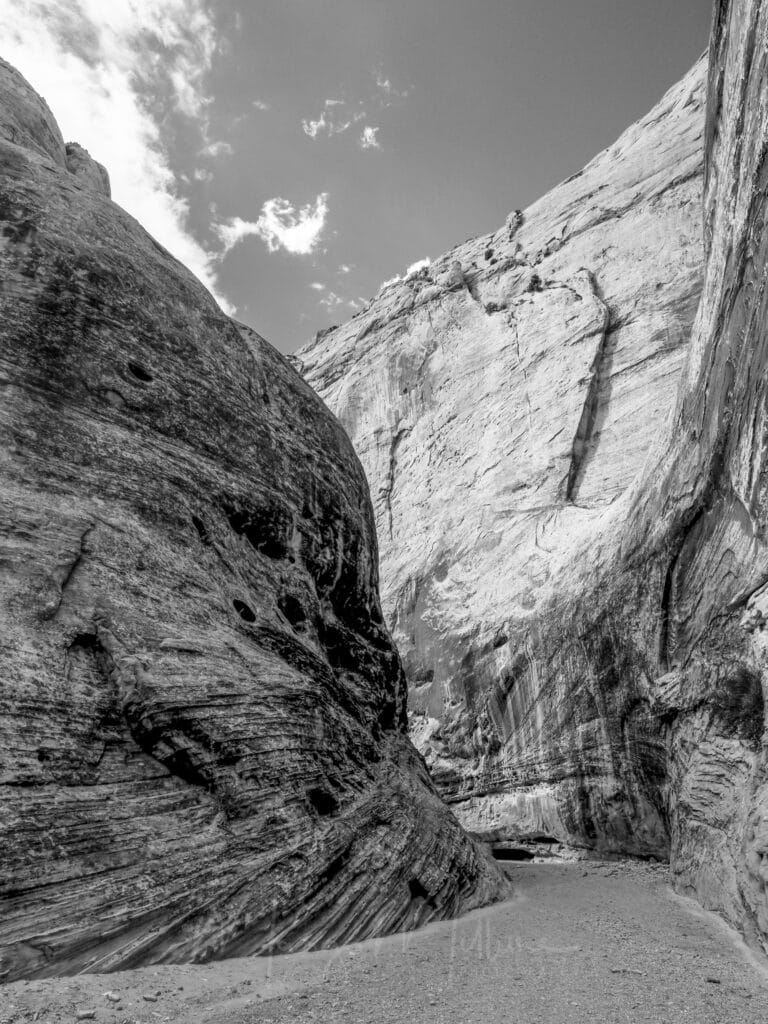
The next morning we drove on the Capitol Reef Scenic drive to take advantage of the easy Capitol Gorge and Grand Wash Trails, set amidst the geographical features for which the park is named. Adjacent to Capitol Dome, the Capitol Gorge trail meanders around the dome-shaped sandstone formations and The Grand Wash Trail is a flat walk through a sometimes narrow canyon between towering porous rocks that resemble an ocean reef. Both of these hikes are out and back and easy to do partially.
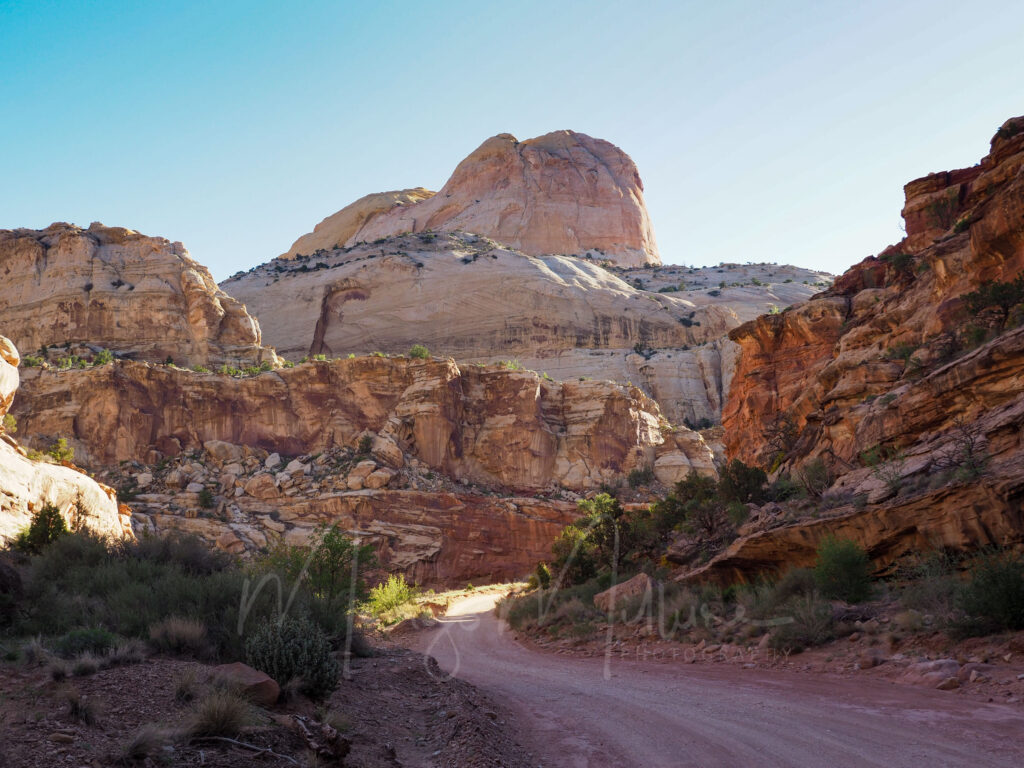
In the afternoon, we hiked the more intermediate level and incredibly rewarding Hickman Bridge Trail. Here Capitol Reef’s violent geological history is on full display showing the effects of how different varieties of sandstone erode at different rates.
Throughout the trail, we had the odd sensation of never being sure when we were standing up straight. The up and back hike that goes around the hallmark feature of the Hickman arch, takes around 1.5 hours, with a longer option to the rim overlook available, which I would definitely take if I ever return.
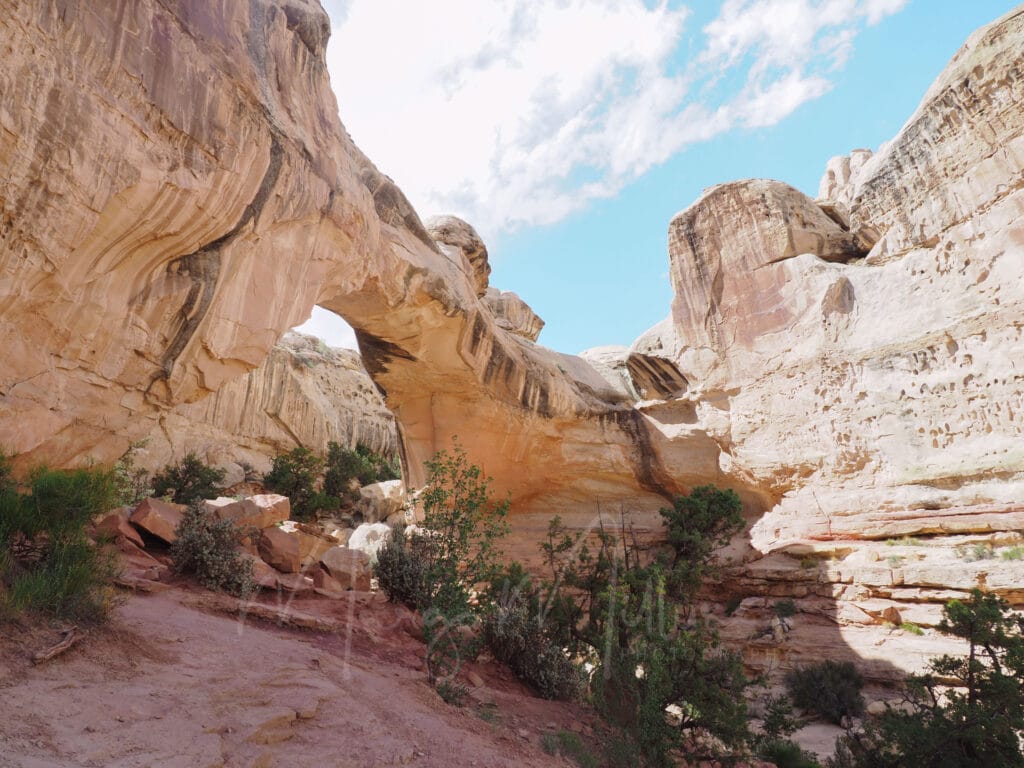
Stay longer, and definitely rent that high profile SUV
To say there is plenty to see in Capitol Reef is a huge understatement. Given that we we only had one full day in the park, we concentrated on hikes and sights around the Fruita area. If I ever return, I’d stay for at least two more days and check out two more remote areas of the park, the Cathedral District located to the north, and the Waterpocket District located to the south.
In late April, anyway, Capitol Reef felt like a well-kept secret compared to Utah’s other national parks. Looking back if I could only visit one of Utah’s national parks again, this would be it.
Leave a Reply